Mad Max (1979)
“They say people don’t believe in heroes anymore.”
|
Synopsis: |
|
Genres, Themes, Actors, and Directors:
Response to Peary’s Review: … while “the rest of the film is alternately a bike picture, a horror film, and another in the long line of fascist-heroes-on-a-revenge-spree films.” He points out that throughout the film, “Miller exhibits a striking visual style,” with “his use of a fender-level camera, sweeping pans, breakneck-speed tracking shots, and ‘shock’ editing correspond[ing] perfectly to the powerful images he shoots — specifically the speeding cars and cycles.” Peary argues that “while you’ll like Max [Gibson] and Jessie [Samuel], a terrific married couple”: … “and cocky, highstrung Jim Goose, this film is less interesting as a story about ‘people’ than as a marriage between the filmmaker’s machines (his camera, his editing tools) and the motor-powered machines that he films.” Indeed, he asserts that “Miller’s cynical, depressing film is about dehumanization resulting from an apocalypse,” with the film’s sequel — The Road Warrior (1981) — presenting a more optimistic view of humanity. Peary discusses Mad Max at greater length in his first Cult Movies book, where his analysis centers on the film’s emergence as “the first and only [at the time] film of a genre that surely could be explored and exploited” — that is, “violent, futuristic car-motorcycle films full of spectacular chases and crashes,” in which “stuntmen are the stars”. (Sure enough, sequels emerged in 1981 and 1985, and then another much later in 2015.) He writes that “while the cult fascination for Mad Max has a lot to do with its apartness from other contemporary films, there is much in it that suggests certain familiar influences on Miller.” For instance, “one film that may have caught his eye is A Boy and His Dog (1975),” given that it’s “set in a post-apocalyptic age.” (However, it should be pointed out that Miller has admitted that “it was not the intention when the script was written, to set it in a post-apocalyptic world”; rather, “this was done because they didn’t have the money for extras and properly maintained buildings,” and “in order to cover for this production value limitation, the title card was added to the beginning, explaining the story was set after a world war.”) Meanwhile, “AIP’s biker films of the sixties likely had an impact on Miller as the cyclists’ menacing demeanor and slovenly appearance recalls the Hell’s Angels types of the AIP drive-in pix” — though “the scene in which the cyclists ride into a small town to spread terror among the townspeople, and line up their motorcycles as if they were a paramilitary outfit, is more reminiscent of The Wild One (1954), the original [motorcycle] gang picture.” Peary points out that “the cyclists also have kinship with the futuristic gang in Stanley Kubrick’s A Clockwork Orange (1971),” given that “not only do both groups speak a similar descriptive language,” but “they also vent their hostilities, boredom, and disrespect for law and order through sadistic rapes and thrill killings.” He adds that the fact that “the cyclists and the main police force are distinguished from one another more by dress than by morality reminds [him] less of other cop-versus-gang films than it does of Quadrophenia (1979),” a film about the “often violent sixties rivalry between the Mods and the Rockers.” Finally, Peary points out that “the red-streaked hair of Nightrider’s girlfriend”: … “and Bubba’s short-cropped hair” show “that Miller has [also] incorporated punk into his pop art.” Peary elaborates on the film’s status as an “atmospheric horror film” by noting that “when Max approaches the Goose in the hospital bed and his partner’s burned-black hand falls out from beneath the sheets,” it “resembles a monster’s claw”: … and although “Jessie’s confrontation with the cyclists while getting ice cream is typical gang picture fare,” when “she later discovers the severed hand of one of the bikers attached to her car, we are once more in the horror picture domain.” These “elements take over completely” later in the film, once Max and Jessie are away at her aunt’s country home and the film becomes singularly focused on vengeance. While this action-packed, fight-filled movie will primarily appeal to those interested in hardcore car-chase flicks, it does hold interest and value as a crucial title in Australia’s burgeoning film industry, and for providing Gibson with his debut role. Notable Performances, Qualities, and Moments: Must See? Categories
(Listed in 1001 Movies You Must See Before You Die) Links: |

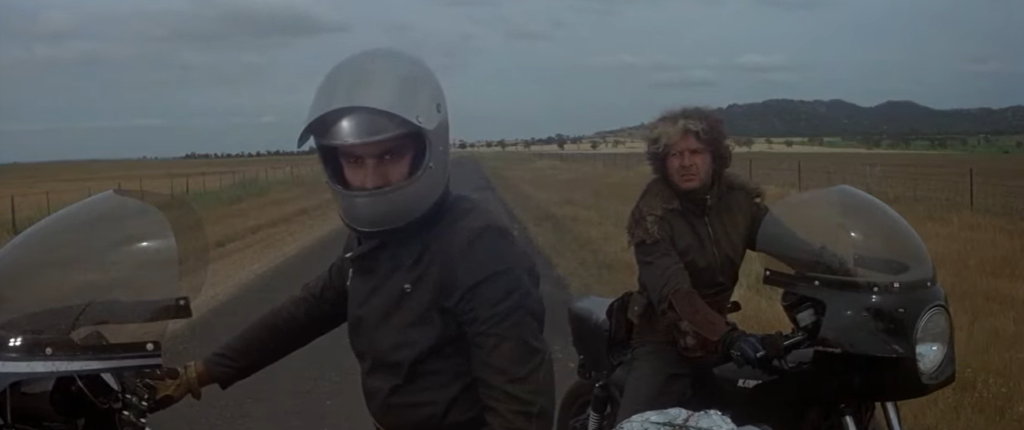
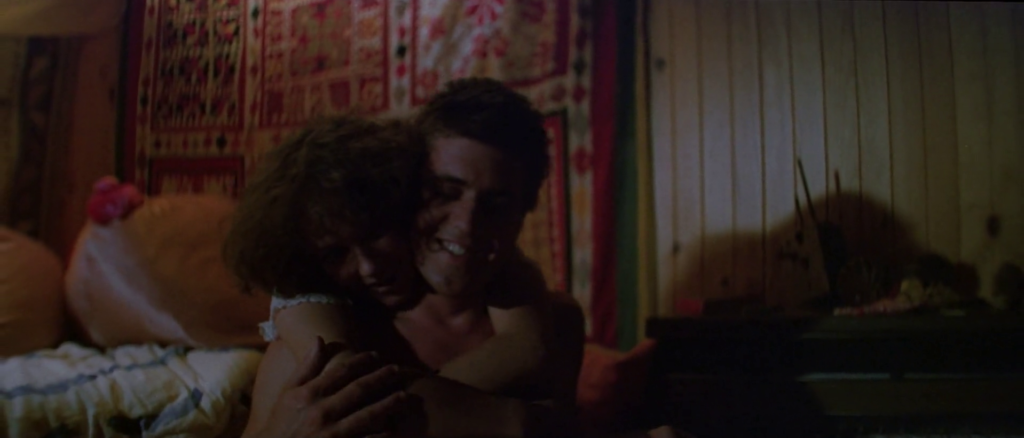
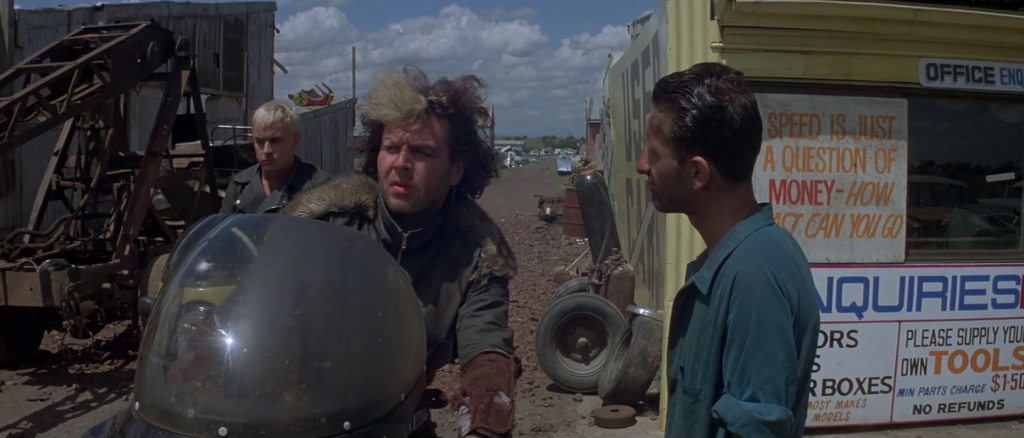

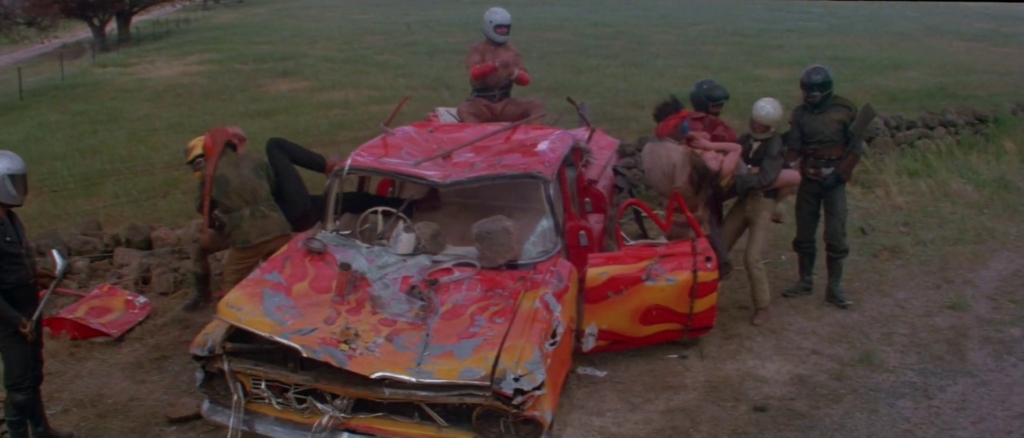

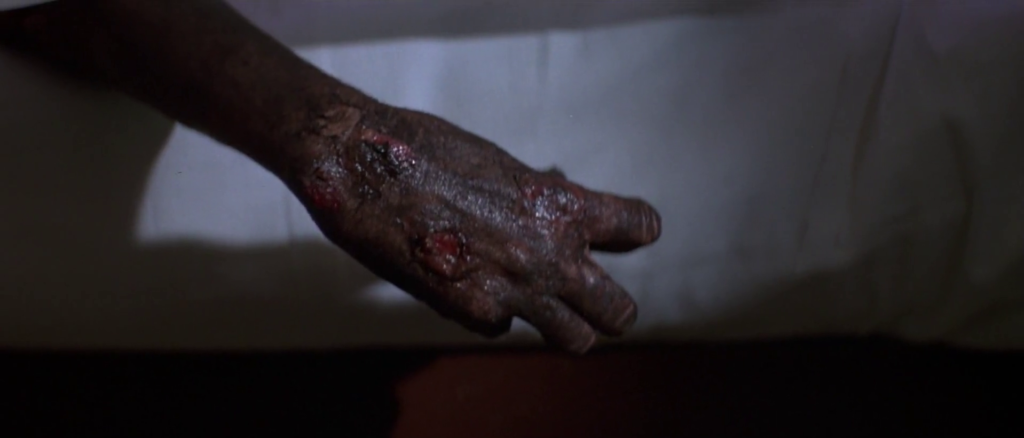
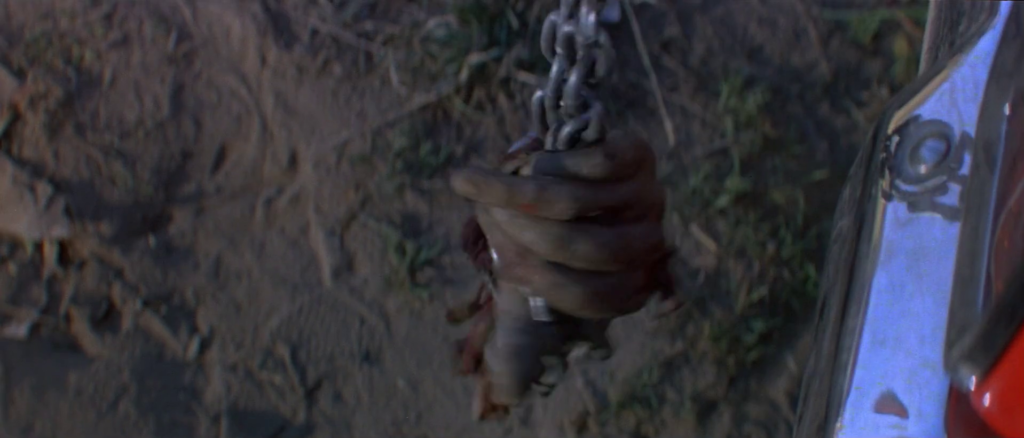
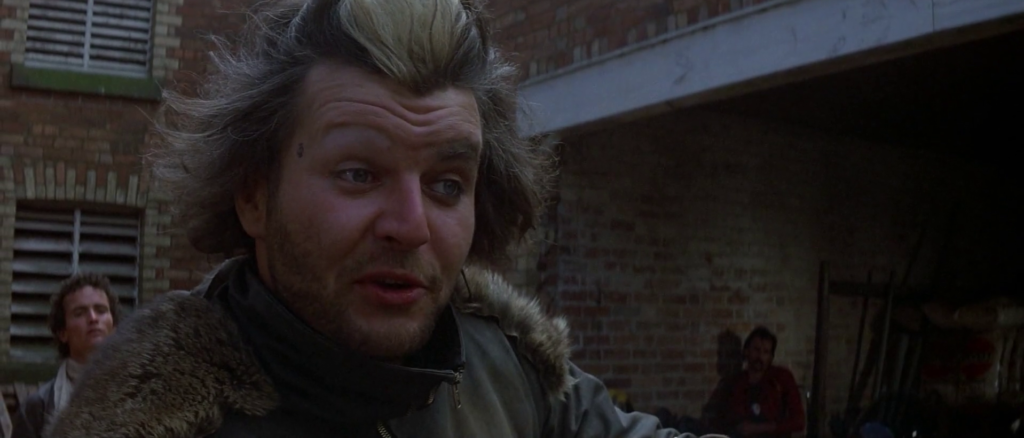
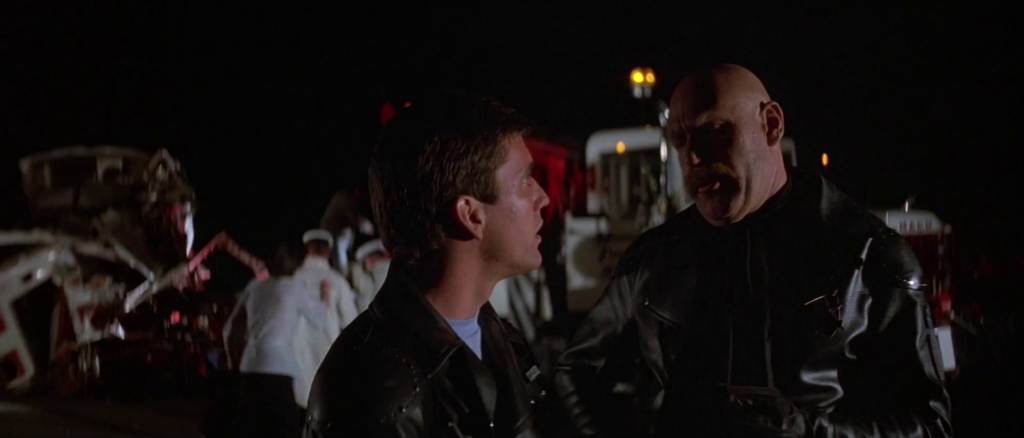
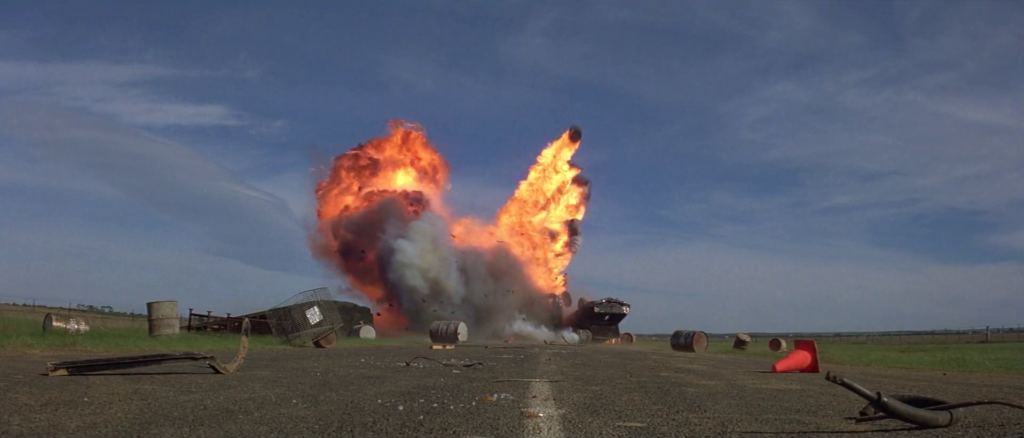
3 thoughts on “Mad Max (1979)”
Rewatch (4/30/21). A once-must – as a largely influential cult film and for its depiction of a post-apocalyptic reality.
I’m less inclined to promote the film for its actual content since it mostly plays as a popcorn flick. It’s ultimately a simple story even if it seems complicated in its first half. The film’s focus is its violence.
Still – it has a vision and a mindset re: character / group behavior in a futuristic setting. As such, it’s instructive and valuable food for thought.
The best of the quartet and an excellent film in in it’s own right with likeable leads and memorable villains. It’s the only one to depict a future that is completely believable. The central thrust of the sequels which are set “after the Oil Wars” is that fuel is in short supply … so everyone powers about in gass-guzzling muscle cars.
This one has a weird atmosphere and although there’s no futuristic tech on display, it does effectively create a world set not too far in the then future of 1979. I would rate this as a must but it’s less impactful on cinema than the decent but overrated 1981 sequel, Mad Max 2 which kicked off a deluge of celluloid dedicated to ratty, tatty future societies set in wastelands with funky outfits and cars that kept (especially) the Italian and Filipino film industries going for the decade following.
A cracking film.
Incidentally, Keays-Byrne died only fairly recently in 2020 and Vincent Gil (Nightrider) last month.